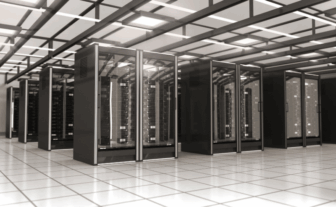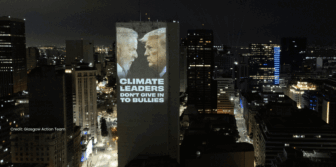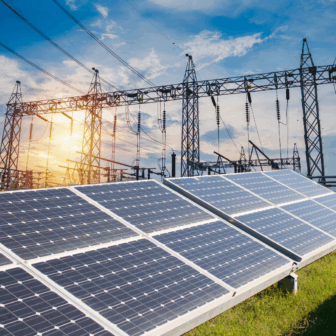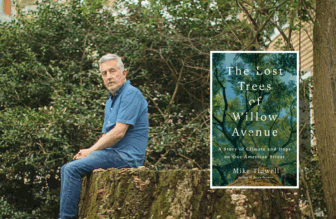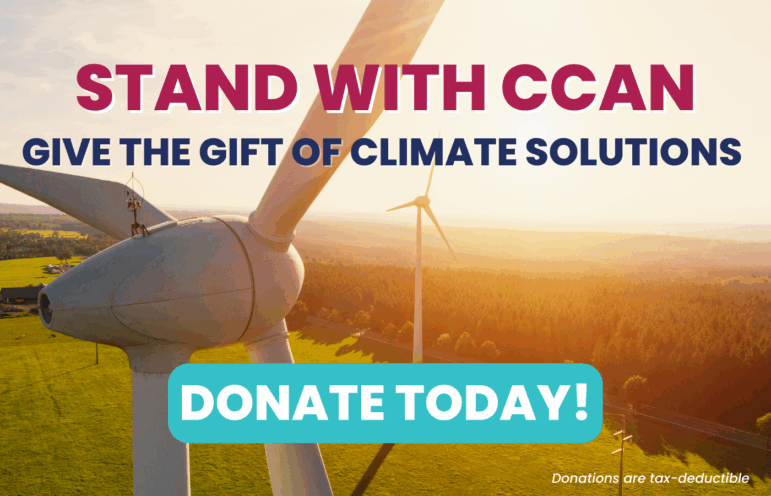Want to See Climate Change?
Look Out Your Front Door. It's here
An open letter from Mike Tidwell, CCAN Director
Has anyone noticed that our local weather in the D.C. region has turned truly screwy? We go from one bizarre weather condition to the next with almost no pause in between for "normal" conditions. It's too wet, too dry, too cold, too warm, too windy – nearly all the time. Hmmm? And scientists and average people all over the world, from Japan to Argentina, report similar strangeness. Thomas Friedman of the New York Times just wrote from Kenya that the Serengeti's April rains, so critical to that famous ecosystem, haven't shown up this spring. And they didn't come last year. There's just no normal weather anymore. Anywhere.
In the D.C. region nothing illustrates this better than the annual Martin Luther King parade. Last year, tired of the cold and grayness of January, the organizers decided to move the annual parade to early April. The result? This year on January 16th (the official King holiday) it was 70 degrees in D.C. Remember all that freakish winter warmth? Outdoor barbeques broke out all over the city on backyard decks still festooned with Christmas decorations. And on Saturday, April 7th, the date of the "warmer" and more hospitable MLK parade? There was actually snow on the ground. The parade majorettes and tuba players woke up to 34 degrees and a blanket of snow on the ground, the most April snow in DC since 1924.
And yes, I know: There's always been weird weather that occasionally defies the seasonal norms, sometimes dramatically. It's part of the natural unpredictability of weather. And if you listen to the dismissive climate rants of the Rush Limbaugh crowd, you'll yield to that inner voice that wants to reassuringly say: Don't worry. It's all normal. Everything's okay.
But I challenge you, right now, to recognize that what's happening to our local weather is not normal. There's satellite imagery showing the Greenland ice sheet is imploding, of course, and other data showing that large-scale hurricanes are becoming more frequent in the Atlantic. And if such profound changes are happening at the macro climate level due to global warming, how could they not be happening at the micro regional weather level?
The reality is this: changes are happening to our local weather. Right now. And you've seen the evidence with your own eyes. Just look at the last 13 months in the D.C. region. People so easily forget – and I think many want to forget — all the weather anomalies of the past few months and years. By doing so we're able to avoid acknowledging the truly disturbing pattern of local strangeness.
First off, anyone remember a year ago March? Who recalls that we had zero – absolutely zero – rain in Washington during that month? No measurable precipitation recorded at Reagan National Airport for all of March 2006. March is normally one of our wettest months of the year in D.C. But March 2006 was drier in D.C. than in the Sonoran Desert of Arizona. Extremely odd.
Followed by what? Followed by rain in June 2006 the likes of which almost no one in D.C. has ever seen before. A record 14 inches fell for the month at National Airport. An astonishing 8 inches fell in 24 hours in late June. Sligo Creek where I live in Takoma Park became a roaring torrent, washing away entire pedestrian bridges and playgrounds and damaging roads. In nearly 20 years of living in Takoma Park, I'd never seen anything close to it.
Followed by what? A blast furnace of heat in July and August in DC and across much of the country. Remember that summer heat? Crops failed throughout the region. Even Christian conservative Pat Robertson was won over, saying the outlandish summer heat wave had finally convinced him that global warming was real. Heat records were set in dozens of states.
Followed by what? More highly unseasonable warmth in the autumn of 2006, especially December, which ranked as the 10th warmest ever in D.C., contributing to a yearlong streak nationwide that made 2006 the warmest year ever recorded in America. That warmth extended to MLK day this year and the strange January blooming of cherry trees in parts of D.C. Remember that headline?
Followed by what? Highly extreme COLD weather in late January and February. In fact, February of this year was the second coldest on record for the region.
Followed by what? Can anyone, anyone, anyone remember an April like the one we've had this year in the region? Snow or the threat of snow throughout the first two weeks of the month? Are you kidding me? Temperatures routinely in the 30s at night? Baseball players bundled up like Eskimos? A blanket of white stuff for the MLK parade? And then the Nor'easter from hell?
Are we getting the picture yet? There's more than just a pattern here. An entirely new and oddball weather regime seems to have fully unpacked its bags. Our weather, quite frankly, has become unrecognizable.
And unless we get off fossil fuels as soon as possible, this weather inconvenience will become a full-blown climate nightmare, scientists warn. Already, Allstate Insurance has stopped issuing new policies in coastal Maryland because of global warming-enhanced hurricanes. And the U.S. EPA says agricultural output could plummet in the region in coming decades due to deepening weather disruptions.
Mark my words, after this current April cold spell ends, there will be another weather novelty soon, perhaps in June and maybe again in August and then in October. Too cold, too hot, too wet, too dry, too windy. It's here. It's everyday. It's in our face. And it's time we finally used this daily reminder of a world gone haywire to push our leaders to adopt the clean energy policies we need — right now — to re-stabilize our fragile climate and so save our way of life while we still have time.
Sincerely
Mike Tidwell
Mike Tidwell is director of the nChesapeake Climate Action Network and author of The Ravaging Tide: Strange Weather, Future Katrinas, and the Coming Death of America's Coastal Cities

